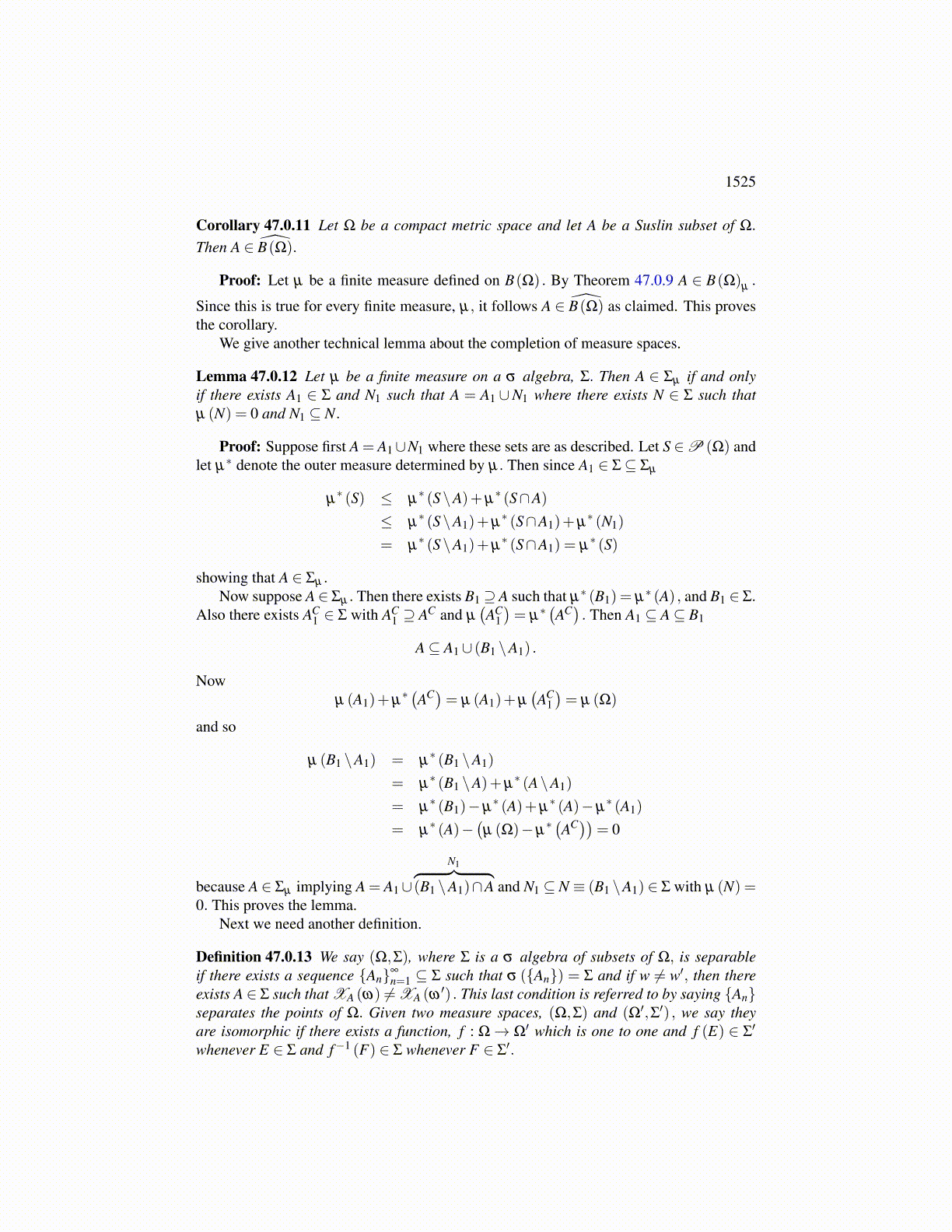
1525
showing that all the inequalities must be equal signs. Hence, referring to the top and fourthlines above,
µ (Ω) = µ∗ (Ω\F)+µ
∗ (F \E)+µ∗ (E ∩F) .
Subtracting µ∗ (Ω\F) = µ (Ω\F) from both sides gives
µ∗ (S) = µ (F) = µ
∗ (F \E)+µ∗ (E ∩F)≥ µ
∗ (S\E)+µ∗ (E ∩S) ,
This proves the lemma.The next theorem is a major result. It states that the Suslin subsets are measurable under
appropriate conditions. This is sort of interesting because something being a Suslin subsethas to do with topology and this topological condition implies that the set is measurable.
Theorem 47.0.9 Let Ω be a metric space and let (Ω,F ,µ) be a complete Borel measurespace with µ (Ω) < ∞. Denote by µ∗ the outer measure generated by µ. Then if A is aSuslin subset of Ω, it follows that A is µ∗ measurable. Since the original measure space iscomplete, it follows that the completion produces nothing new and so in fact A is in F . SeeProposition 12.1.5.
Proof: We need to verify that
µ∗ (Ω)≥ µ
∗ (A)+µ∗ (Ω\A) .
We know from Corollary 47.0.6, there exists a continuous map, f : NN→ A which is onto.Let
E (k)≡{
n ∈ NN : n1 ≤ k}.
Then E (k) ↑ NN and so from Lemma 47.0.8 we know µ∗ ( f (E (k))) ↑ µ∗ (A) . Therefore,there exists m1 such that
µ∗ ( f (E (m1)))> µ
∗ (A)− ε
2.
Now E (k) is clearly not compact but it is trying to be as far as the first component isconcerned. Now we let
E (m1,k)≡{
n ∈ NN : n1 ≤ m1 and n2 ≤ k}.
Thus E (m1,k) ↑ E (m1) and so we can pick m2 such that
µ∗ ( f (E (m1,m2)))> µ
∗ ( f (E (m1)))−ε
22 .
We continue in this way obtaining a decreasing list of sets, f (E (m1,m2, · · · ,mk−1,mk)) ,such that
µ∗ ( f (E (m1,m2, · · · ,mk−1,mk)))> µ
∗ ( f (E (m1,m2, · · · ,mk−1)))−ε
2k .
Therefore,
µ∗ ( f (E (m1,m2, · · · ,mk−1,mk)))−µ
∗ (A)>k
∑l=1−(
ε
2l
)>−ε.